
Parts To An Acoustic Guitar
I’m going to guide you through the landscapes of guitar parts, a must-know for guitar enthusiasts and players across all skill levels. When you’re familiar with its architecture, you unlock a deeper appreciation not just for the music it produces, but also the craftsmanship behind it.
Think of the guitar as a close companion. The better you know it, the better you’ll understand it. We will look at the fundamental parts of the guitar, starting with the Neck, Fretboard, Head, Frets, Strings, and Body.
Table of Contents
Navigating the Guitar’s Core Components
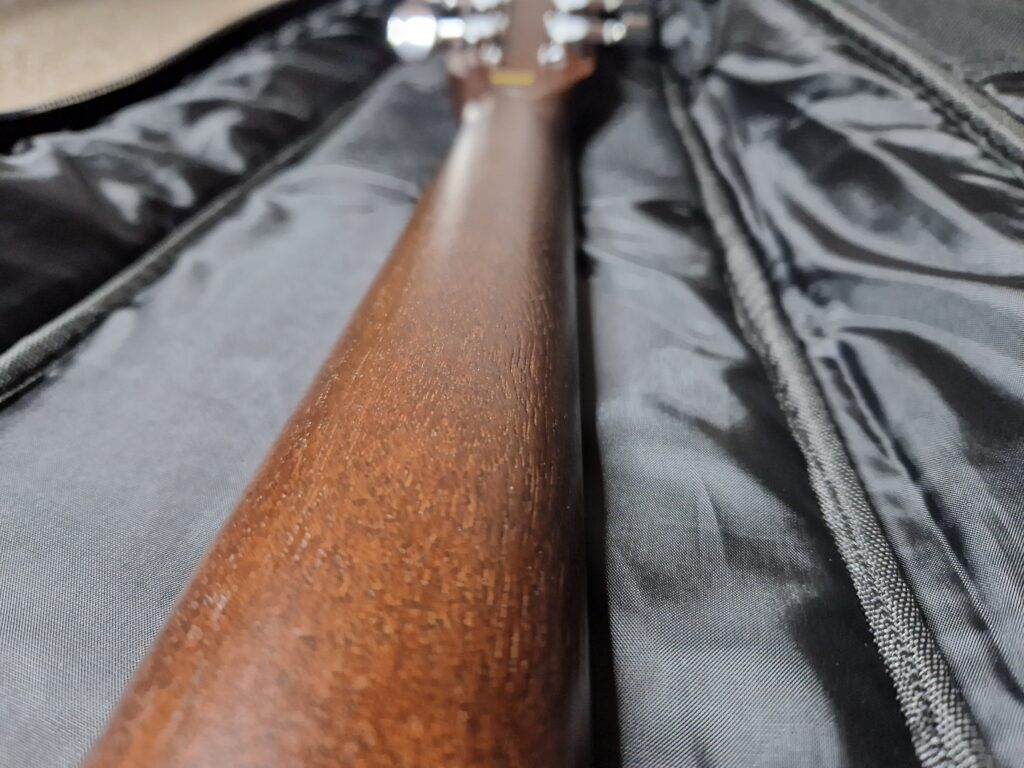
Guitar Neck
First up is the neck. Think of it as the backbone of your guitar, as it carries the load of the strings from the head down to the body. But the neck isn’t just a solid piece of wood.
It’s carefully crafted to balance strength and playability, often made of sturdy materials like maple or mahogany with materials varying through different price ranges.

Fretboard
On top of the neck lies the fretboard. This is where your creativity comes to life. It’s the surface you interact with the most, pressing down on the strings to form chords and play notes.
Fretboards are usually made of rosewood or mahogany and contain the frets—those metal wirings that mark out specific notes.

Guitar Head
The head of the guitar might seem like a small part, but it’s got a big job. It holds the tuning heads or pegs, which you’ll twist and turn until each string has just the right tension. And trust me, getting your strings in tune makes all the difference.
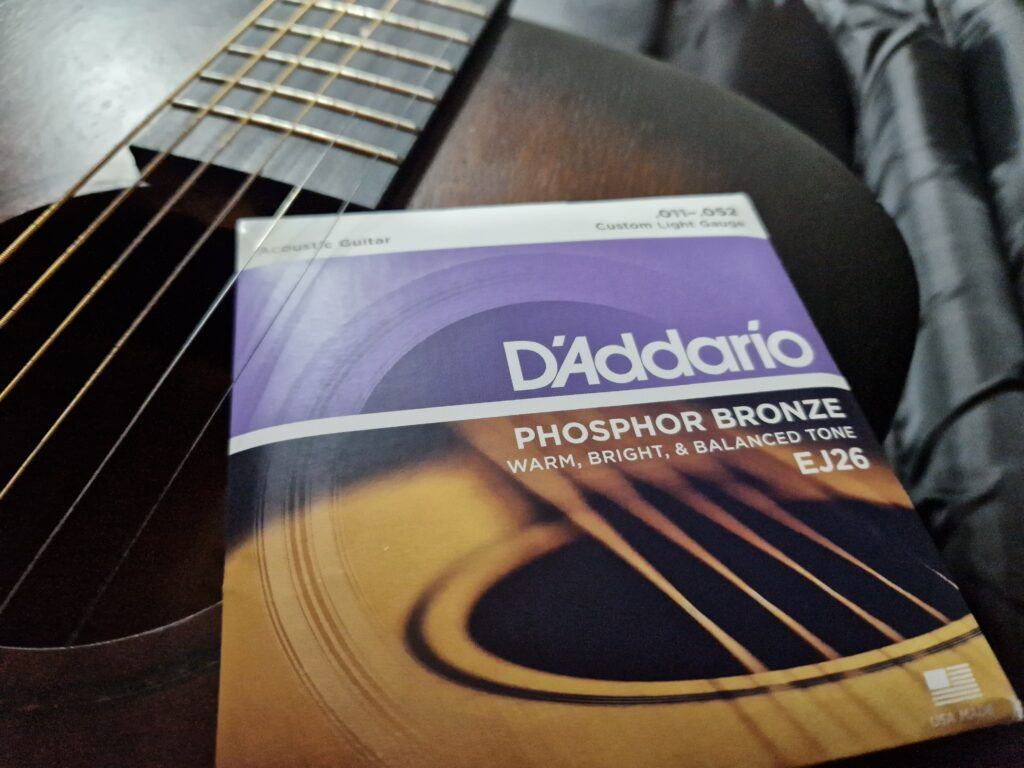
Strings
Speaking of strings, most guitars come with six but don’t be surprised if you encounter guitars with seven or more.
Whether they’re made of steel for a bright, punchy sound, or nylon for a softer, mellower tone, often found on classical guitars. They are the voice of your instrument.
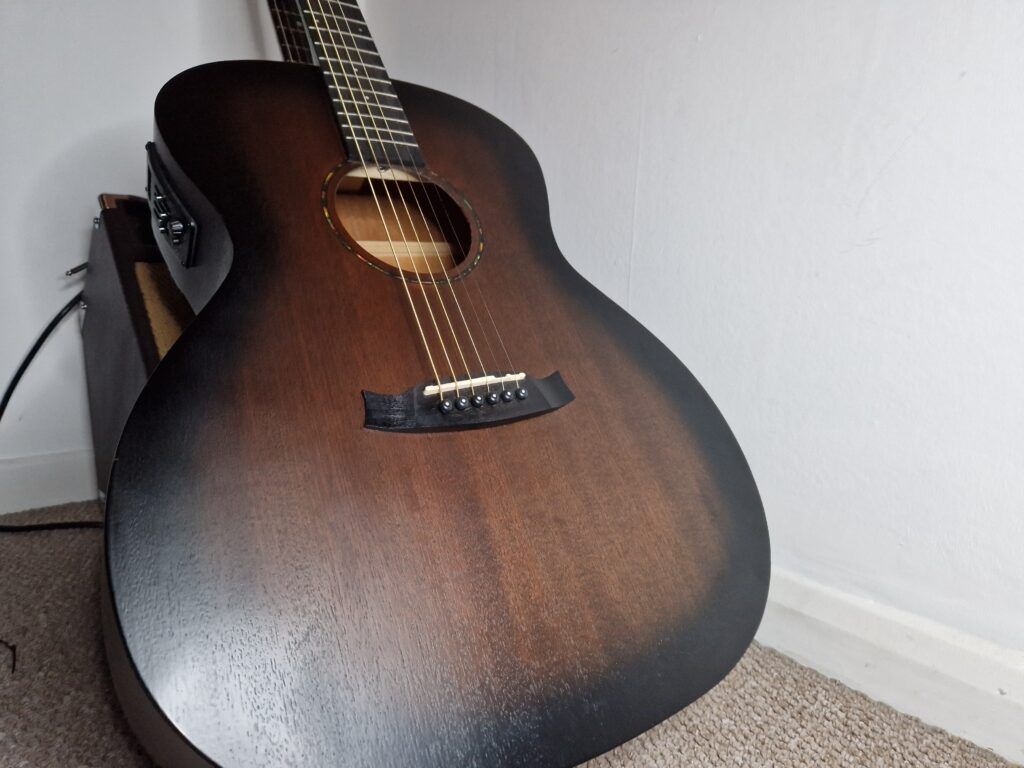
Guitar Body
And then we arrive at the body, the part of the guitar that rests against your lap and really shapes its voice. It’s typically made of varieties of wood like spruce or mahogany, which can vastly affect the sound.
The body isn’t just a holding place for other parts; it’s the resonating chamber that amplifies your guitar’s sound, backed up by the bridge where strings tightly connect and the sound hole, which projects your guitar’s voice out into the world.
The Different Types of Guitar Bodies

Just like a diverse cast of characters in a musical ensemble, acoustic guitars come in an array of body types, each with its own distinctive personality and character. Picture strolling through a guitar showroom, and you’ll encounter a captivating lineup of shapes and sizes like the ones named below…
- Dreadnought
- Jumbo
- Auditorium
- Concert
- Parlour
- Classical
From the sleek curves of the Auditorium to the bold contours of the Jumbo. These diverse body profiles influence the instrument’s tonal palette, dictating the balance between bass and treble, the resonance in the midrange, and the overall projection.
This delightful variety allows you and other guitarisits to choose an instrument that resonates with your musical preferences.
So, as we navigate the symphony of choices, let’s explore how these diverse body types contribute to the rich tapestry of acoustic guitar sound.
Note!!
To figure out which size guitar will be most suited to you, I would suggest that you visit a nearby Music store so that you can physically handle the guitar and decide if it’s right for you. This will always be the best way to purchase a guitar.
Guitar Strings
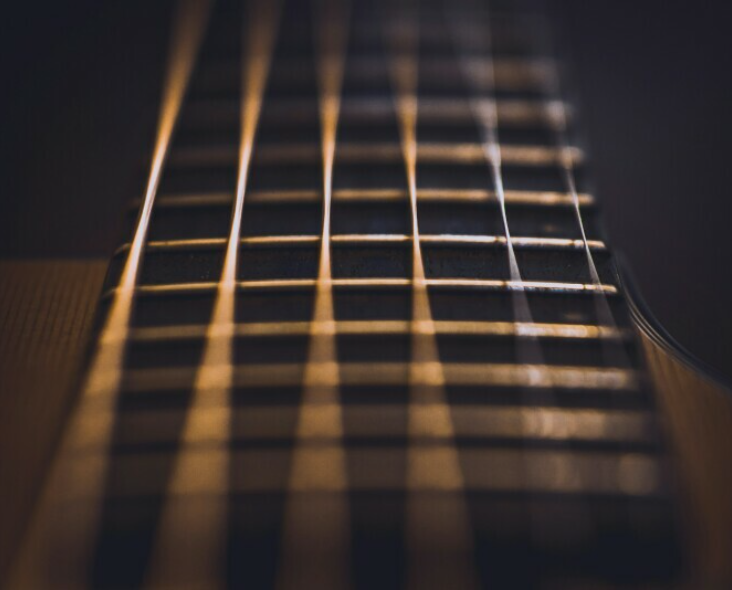
Now we understand that there is more than one potential option for guitar body types, let’s get acquainted with the strings of your acoustic guitar.
You’ve probably heard the sequence EADGBE thrown around quite a bit, If not I will now explain what this means. The phrase to remember for this would be, Eddie Ate Dynamite, Good Bye Eddie.
This is a phrase that was used by myself and many others, I believe, to remember the string names and the standard tuning for an acoustic guitar, from the top string (the thickest one) to the bottom string (the thinnest one).
Now, did you notice something interesting? The top and bottom strings, while vastly different in size, actually share the same note: E.
A little Bit of Guitar Theory
They’re called octaves because, although they sound alike, they’re pitched in different registers, with the top string having a lower octave and the bottom string having a higher one. This creates a full range of sounds that’s essential for the guitar’s versatility.
Harmony of the Strings
An acoustic guitar is distinct from its electric counterparts and classical strings, with its warm, resonating tones produced purely through its hollow body. The strings here are the beating heart of the instrument, essential for producing rich, vibrant melodies that have captivated listeners for centuries.
And since strings are crucial, it’s important to understand not just their tuning, but how they interact with other parts of the guitar. That interaction starts on the guitar neck — which is why you’re going to find out about frets and markers next.
Navigating the Frets and Markers: A Guide to the Guitar Neck

If you’ve ever admired a guitarist moving effortlessly along the guitar neck, you’re going to find out about the system that enables such precision – frets and markers. These aren’t just ornamental features; they’re foundational to playing the guitar well.
The metal lines that run perpendicular to the strings on the neck are called frets. They are critical because they allow the guitar to produce various pitches. When you press a string against a fret, the effective vibrating length of the string is shortened, producing a higher pitch.
More About the Fret Board
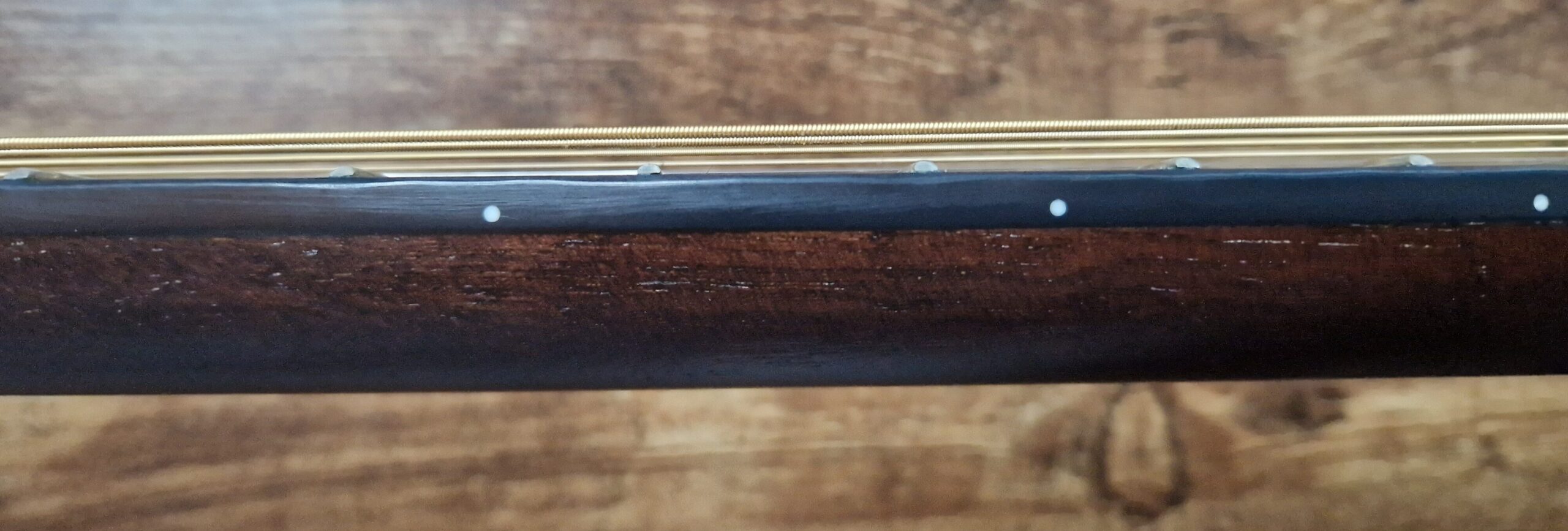
Now, if you are wondering about the dots on the side of the neck. These markers are placed at specific frets – 3, 5, 7, 9, 12, 15, and 17 – and they serve as a roadmap.
If you’re learning a new song or scale, they’re your best friend. For example, the marker at fret 12 is particularly vital because it indicates one octave up from the open string, allowing for quick tuning checks and octave transitions. This is also something that will be looked at in depth in another article.
Following this guide allows you to comprehend what each fret brings to the guitar’s voice. But there’s more to it than just understanding; it’s also about the convenience in learning and performance.
Note!!
In my opinion, every beginner should invest time in familiarizing themselves with these fretboard landmarks. Doing this can save you from looking down too often and helps build the muscle memory needed for smooth transitions between notes in the future.
The Art of Tuning Your Acoustic Guitar
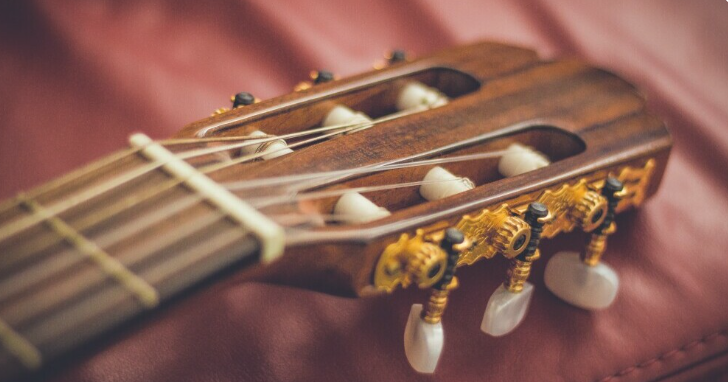
Tuning Your Acoustic Guitar
Now, let’s explore the essential steps to get your guitar in perfect harmony: tuning. It’s more than just putting on the strings; it’s about precision and consistency.
Begin by familiarizing yourself with the string arrangement. Picture yourself with your guitar, poised to play. The lowest string, the E, should be closest to you, while the highest string, the thin E, is farthest away.

Each string corresponds to a specific tuning peg on the headstock: low E to bottom left, A to middle left, D to top left, G to top right, B to middle right, and high E to bottom right.
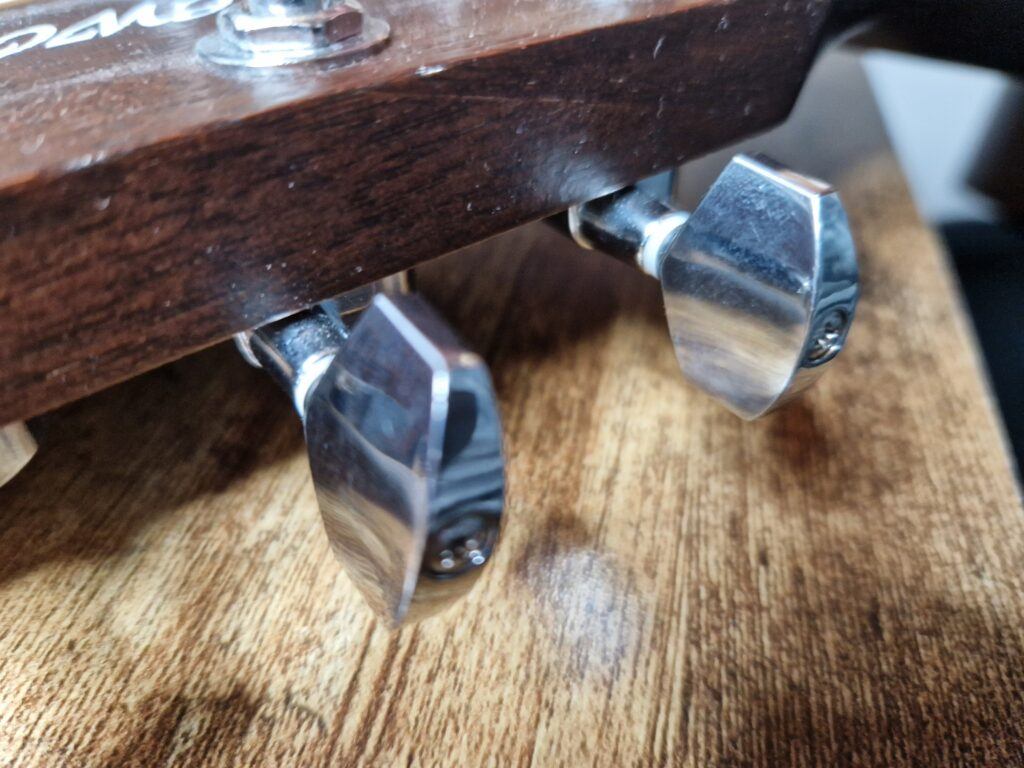
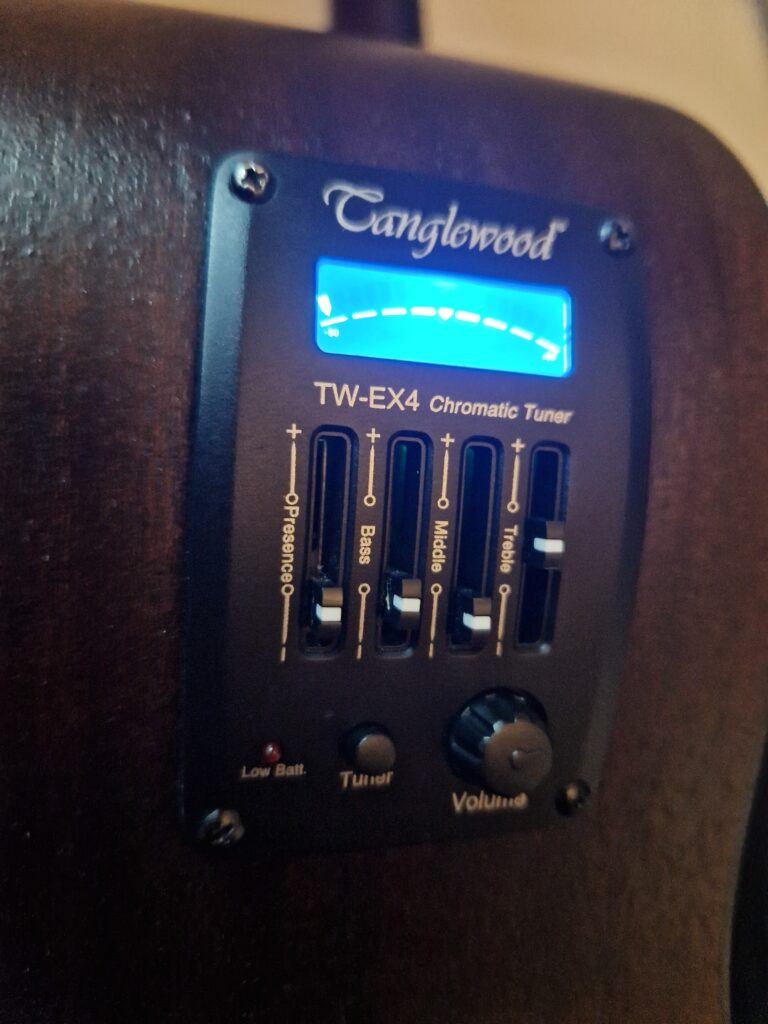
To tune your guitar turn the pegs clockwise to tighten or counterclockwise to loosen. Each peg corresponds to a specific string, creating a rhythmic dance between tension and release. As you turn, listen closely to the pitch changes, seeking that sweet spot where each string resonates with its desired note.
For those just starting their musical journey, investing in a headstock tuner is a wise choice. Fear not, as these tuners are both affordable and readily available online, with platforms like Amazon offering them at a modest price.
Consider it a valuable investment that not only aids beginners in achieving accurate tuning but also ensures a hassle-free tuning experience until you reach a level of experience to be a ble to tune a guitar by ear.
Decorative Elements and Structural Enhancements
Now, let’s shift our focus from the basic playing components to the more intricate aspects of a guitar that enhance both its appearance and functionality. Each element, although sometimes understated, contributes to the guitar’s unique character and performance.
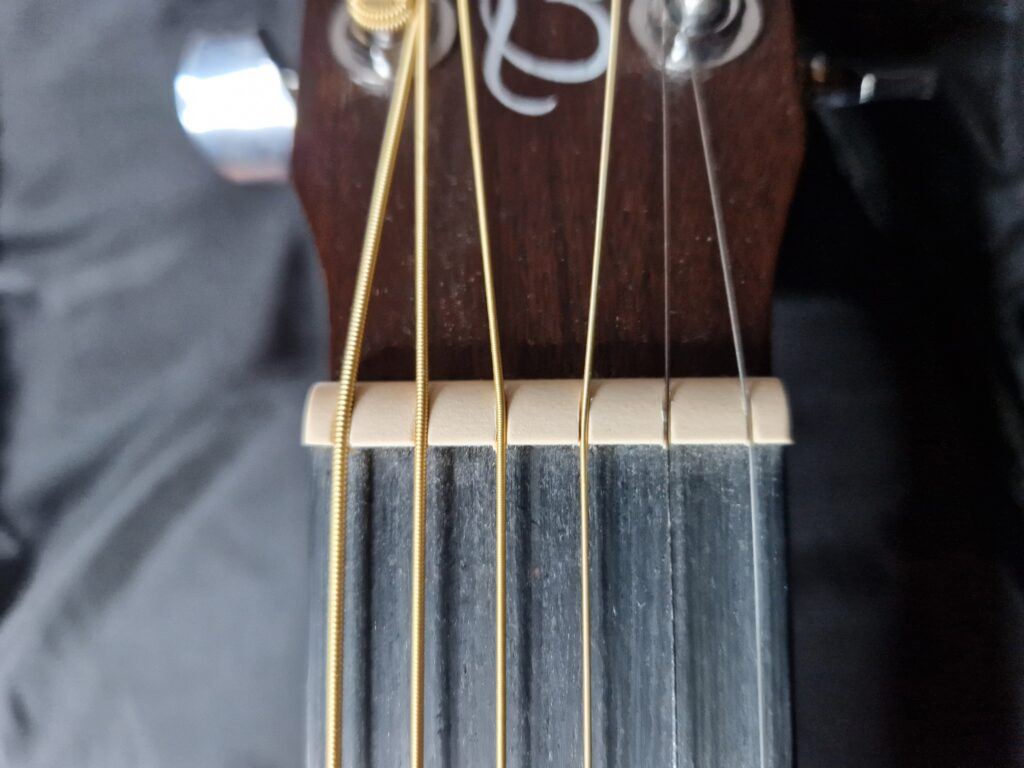
Guitar Nut
Seemingly a simple bar at the end of the neck, it’s integral in maintaining string stability and spacing, which is crucial for clear, in-tune notes.

Pick Guard
If you’ve ever looked at a well-loved guitar, you might’ve noticed the varying degrees of wear directly below the sound hole.
This is where a Pick Guard can really prove its worth, protecting the guitar’s body from the strumming that could eventually lead to scratches and dents, preserving the guitar’s aesthetic and structural integrity for years to come.

Rosette
But the beauty of a guitar isn’t just in its durability; it’s in the details too. The Rosette around the sound hole isn’t simply there for show; it often reflects the craftsmanship and tradition behind the instrument. Similarly, the Binding serves a dual purpose: it’s a stylish feature that also seals the edges of the guitar’s body, fortifying the construction.
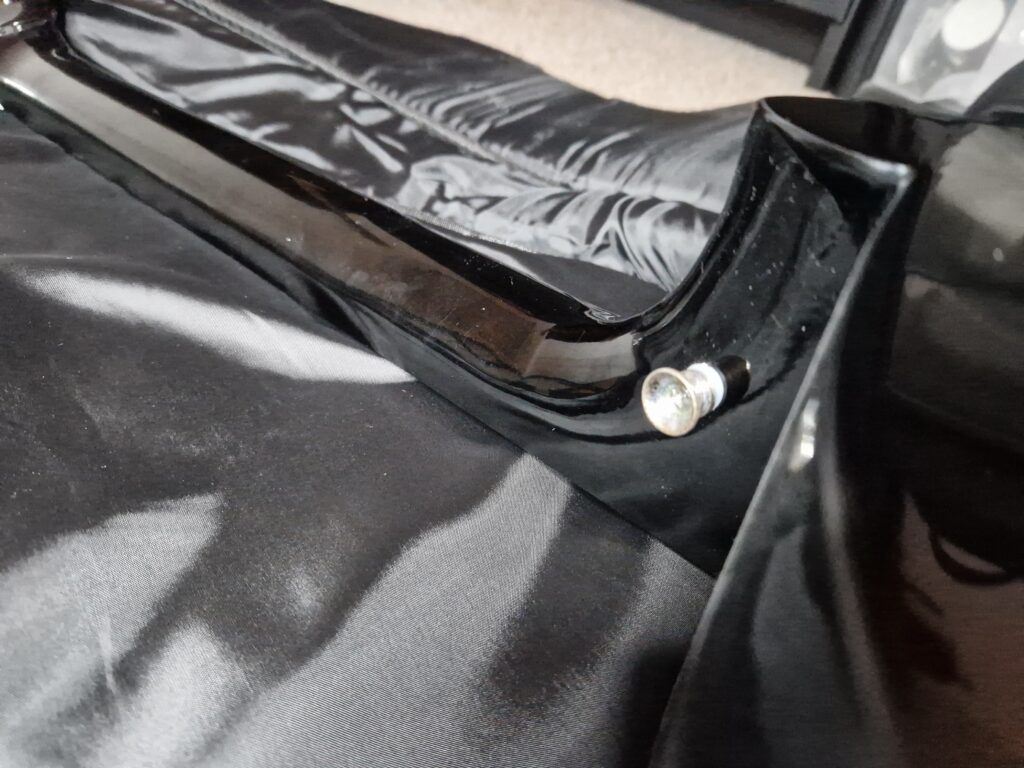
Heel
Where the body meets the neck, the Heel ensures a sturdy junction, necessary to withstand the pull of the strings. This unsung hero of guitar anatomy warrants recognition for its role in fortifying the instrument’s durability.

Soundboard
The Soundboard works in tandem with the Body and Sound Hole to project and refine the instrument’s tone.
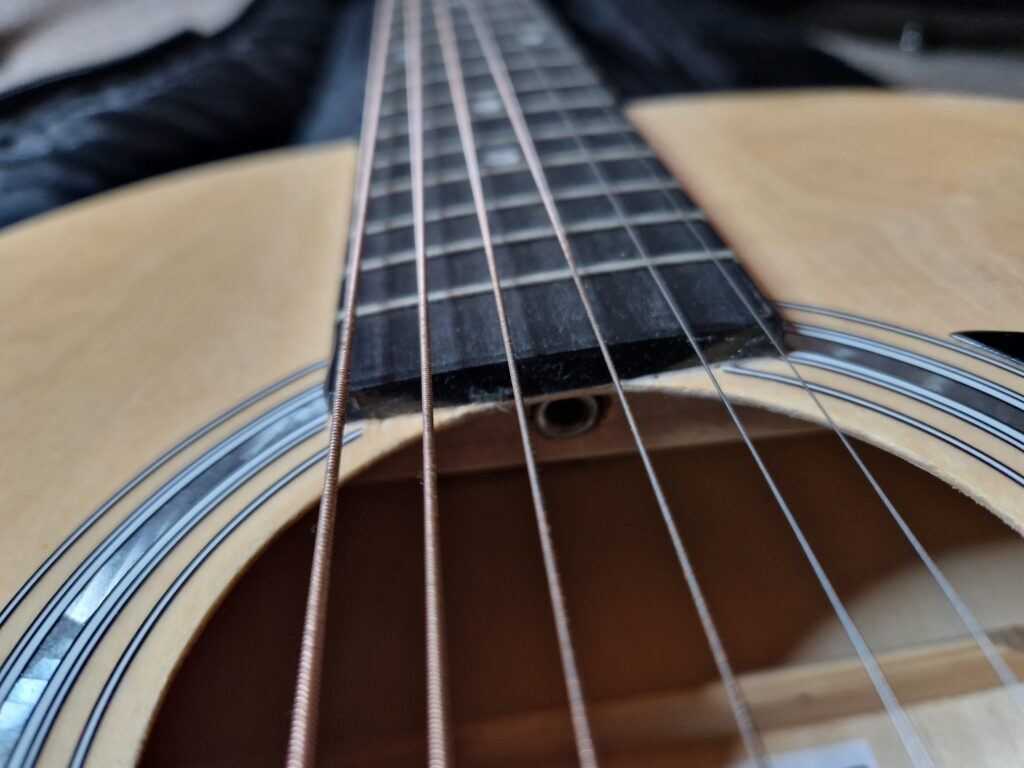
Guitar Truss
Underneath it all, the Truss Rod remains hidden within the neck, yet without it, the tension of the strings could easily warp the wood.
With careful adjustment, this rod can correct the neck’s bow, ensuring the guitar remains playable and precise.
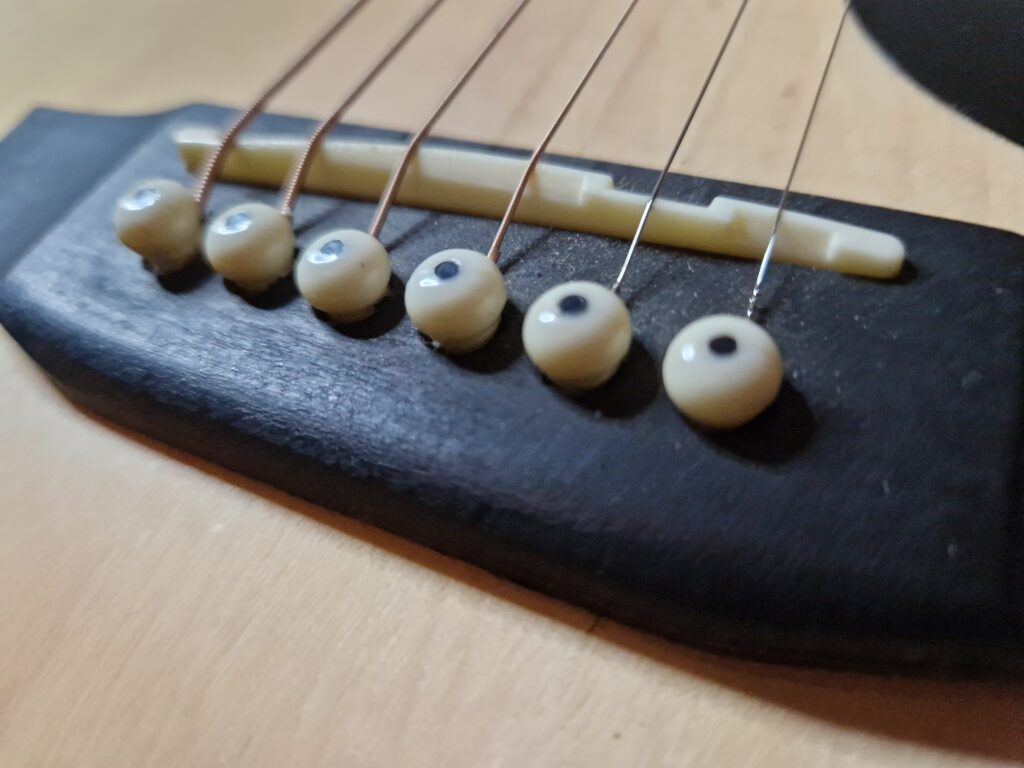
Bridge Saddle & Pins
Finally, the small yet pivotal Bridge Pins and Bridge Saddle play their parts in fixing the strings securely, making sure they contribute to the melody and harmony intended when the guitar was strung.
Conclusion
As we draw the curtain on our exploration of the components that make up the soulful symphony of an acoustic guitar, we find ourselves standing at the crossroads of craftsmanship and melody. From the diverse body types shaping the very essence of your instrument to the delicate dance orchestrated by the tuning pegs, each element plays a pivotal role in the creation of musical magic.
The guitar strings, pulsating with warmth and vibrancy, act as the heartbeat of this melodic journey, weaving rich melodies that have stood the test of time. Moving beyond the strings, we’ve navigated the intricate frets and markers, unlocking the guitar neck’s roadmap and discovering the precision embedded in every note. Thank you for reading.
martin@chordexplorer.com




